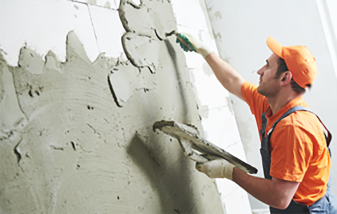
Aug . 22, 2024 04:37 Back to list
HPMC Application in Enhancing Putty Powder Performance and Properties
HPMC for Putty Powder Enhancing Performance and Versatility
Hydroxypropyl Methylcellulose (HPMC) has emerged as a crucial additive in various construction materials, particularly in putty powders. As a versatile water-soluble polymer, HPMC plays a significant role in improving the performance characteristics of putty powders, which are essential for ensuring effective adhesion, workability, and durability in construction applications.
What is HPMC?
HPMC is derived from natural cellulose and modified through an etherification process. It is known for its excellent film-forming, thickening, and emulsifying properties. Being a non-ionic compound, HPMC is compatible with a wide range of materials, making it an ideal choice for various formulations in the construction sector.
The Role of HPMC in Putty Powder
In the context of putty powders, HPMC serves multiple key functions. One of its most important roles is that of a thickening agent. By increasing the viscosity of the mixture, HPMC ensures that the putty adheres well to vertical surfaces without sagging or slumping. This property is particularly beneficial for interior and exterior wall applications, where proper adhesion is critical for maintaining the integrity of the surface finish.
Moreover, HPMC enhances the water retention capacity of putty powders. This is essential for ensuring that the putty remains workable for an extended period, allowing for easier application and manipulation. The extended open time provided by HPMC means that workers can smooth and finish the putty without the risk of premature drying. This quality not only facilitates better application but also contributes to achieving a smoother, more professional finish.
hpmc for putty powder

Improved Adhesion and Durability
The incorporation of HPMC in putty powders also positively impacts adhesion characteristics. A well-formulated putty containing HPMC exhibits superior bonding capabilities to various substrates, including concrete, drywall, and plaster. Enhanced adhesion is vital for ensuring that the putty remains intact over time, preventing issues such as peeling or cracking, which can compromise the finish.
Furthermore, HPMC contributes to the overall durability of the putty. Its film-forming properties create a flexible yet resilient layer that can withstand environmental stresses, such as temperature fluctuations and moisture exposure. This resilience is especially important for outdoor applications, where putty may be subjected to harsher conditions.
Environmental Considerations
In recent years, there has been a growing focus on sustainability and environmental impact in construction materials. HPMC is non-toxic and environmentally friendly, aligning with the demand for greener alternatives in the industry. Its use in putty powders not only enhances performance but also contributes to safer working environments and sustainable building practices.
Conclusion
In conclusion, HPMC is a vital component in the formulation of putty powders, offering a range of advantages that enhance their performance and usability. From improving workability and adhesion to boosting durability and supporting sustainable practices, the benefits of HPMC make it an essential additive in modern construction materials. As the demand for high-performance putty continues to grow, the role of HPMC will undoubtedly remain significant, helping to shape the future of construction solutions. Whether for residential or commercial projects, the integration of HPMC into putty formulations represents a commitment to quality and innovation in the building industry.
-
Versatile Hpmc Uses in Different Industries
NewsJun.19,2025
-
Redispersible Powder's Role in Enhancing Durability of Construction Products
NewsJun.19,2025
-
Hydroxyethyl Cellulose Applications Driving Green Industrial Processes
NewsJun.19,2025
-
Exploring Different Redispersible Polymer Powder
NewsJun.19,2025
-
Choosing the Right Mortar Bonding Agent
NewsJun.19,2025
-
Applications and Significance of China Hpmc in Modern Industries
NewsJun.19,2025







